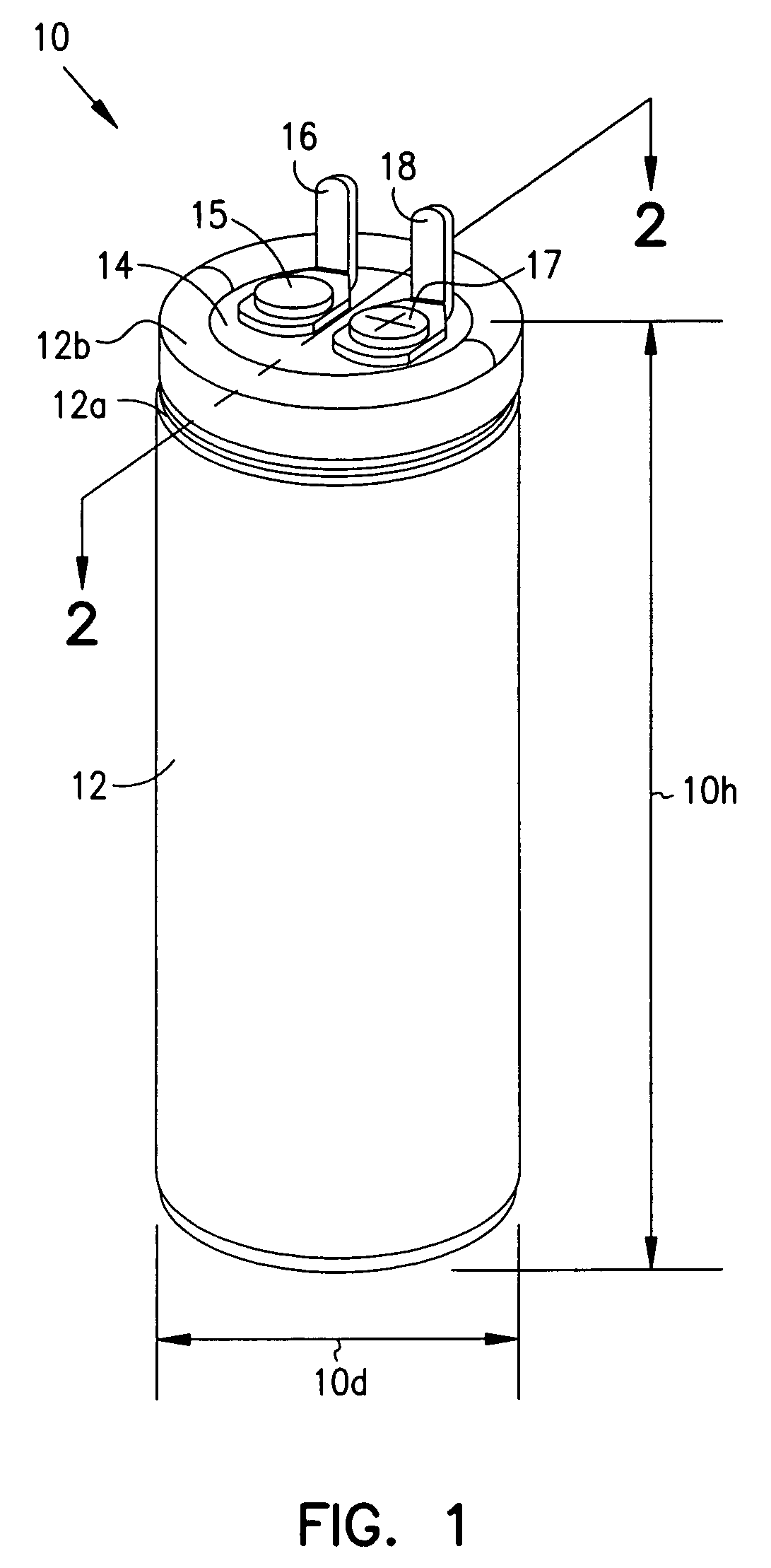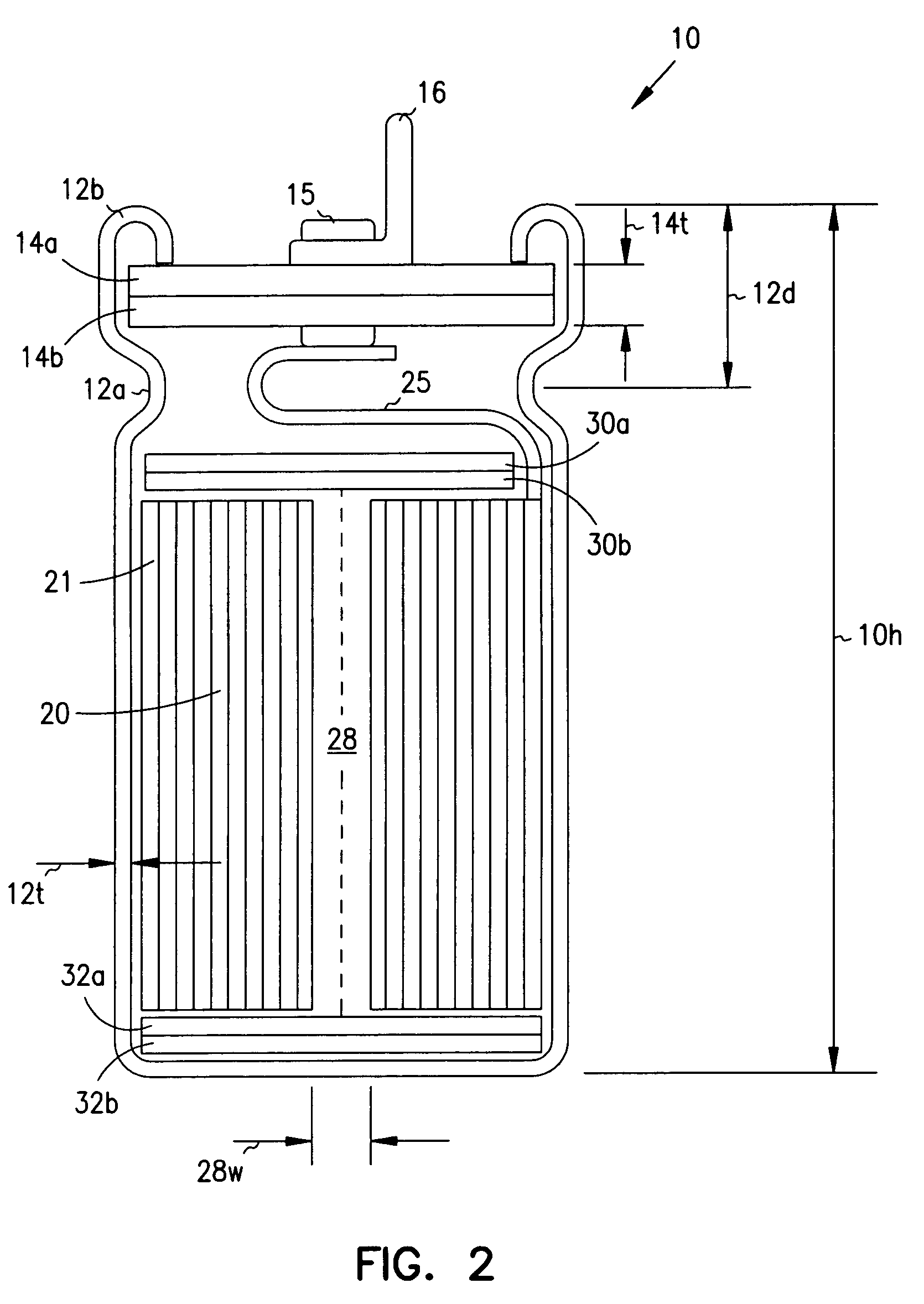Smaller electrolytic capacitors for implantable defibrillators
a technology of electrolytic capacitors and implantable defibrillators, which is applied in the field of electrolytic capacitors, can solve the problems of increasing the life of the capacitor, and achieve the effects of reducing the thickness of the capacitor lid, reducing the diameter of the normally empty mandrel region, and reducing the spa
- Summary
- Abstract
- Description
- Claims
- Application Information
AI Technical Summary
Benefits of technology
Problems solved by technology
Method used
Image
Examples
Embodiment Construction
[0026]The following detailed description, which references and incorporates FIGS. 1–6, describes and illustrates one or more specific embodiments of the invention. These embodiments, offered not to limit but only to exemplify and teach, are shown and described in sufficient detail to enable those skilled in the art to implement or practice the invention. Thus, where appropriate to avoid obscuring the invention, the description may omit certain information known to those of skill in the art.
[0027]FIG. 1 shows a perspective view of an exemplary 360-volt operating, 390-volt surge, 190-microfarad, 15.9-Joule (stored) electrolytic capacitor 10 which incorporates various space-saving features of the present invention. Capacitor 10 has a diameter 10d of about 14.5 millimeters and a total height 10h of about 30 millimeters, and a total volume of about five cubic-centimeters. Thus, capacitor 10 has an energy density of about 3.2 Joules per cubic-centimeter.
[0028]In contrast, conventional ele...
PUM
 Login to View More
Login to View More Abstract
Description
Claims
Application Information
 Login to View More
Login to View More - R&D
- Intellectual Property
- Life Sciences
- Materials
- Tech Scout
- Unparalleled Data Quality
- Higher Quality Content
- 60% Fewer Hallucinations
Browse by: Latest US Patents, China's latest patents, Technical Efficacy Thesaurus, Application Domain, Technology Topic, Popular Technical Reports.
© 2025 PatSnap. All rights reserved.Legal|Privacy policy|Modern Slavery Act Transparency Statement|Sitemap|About US| Contact US: help@patsnap.com



